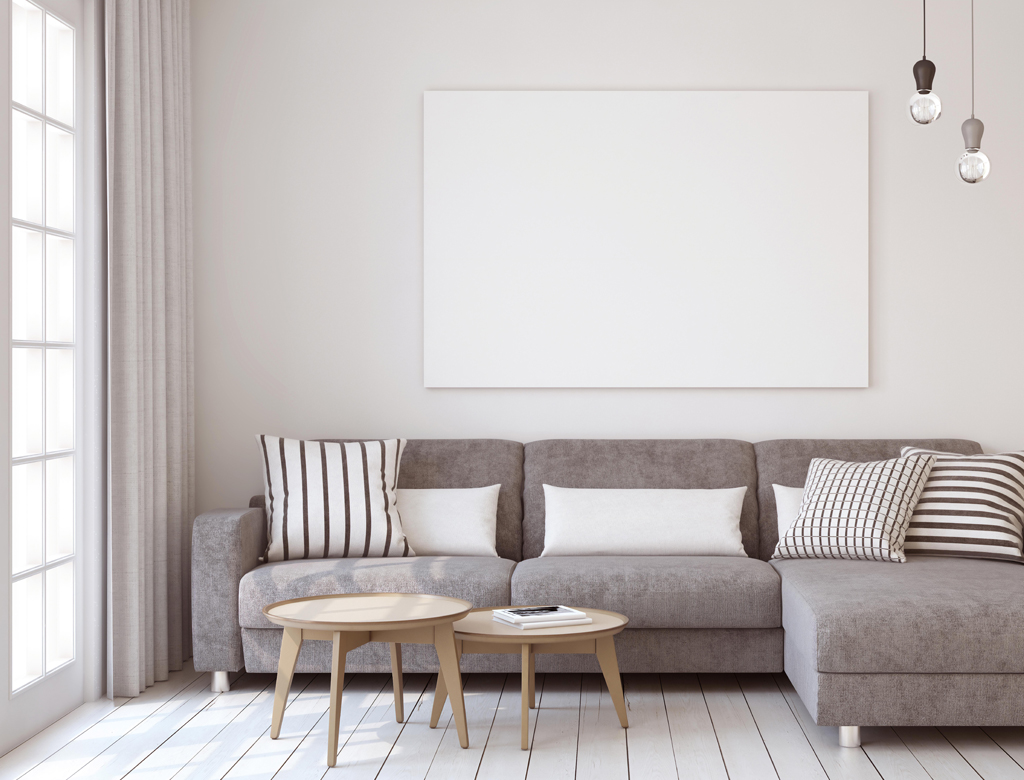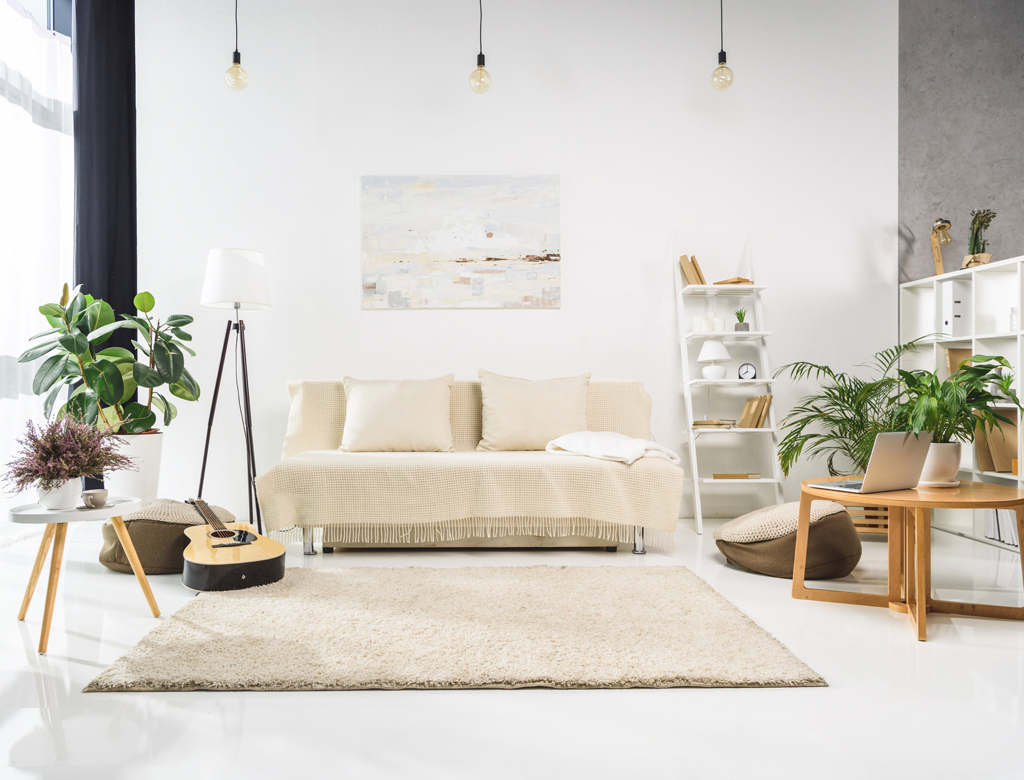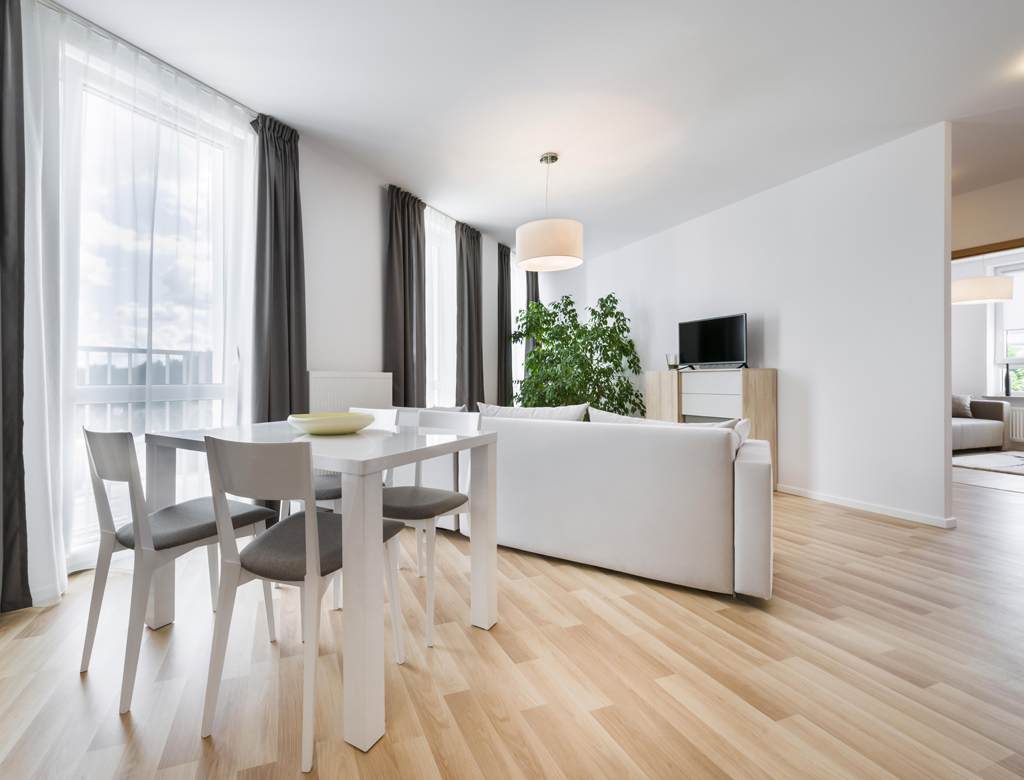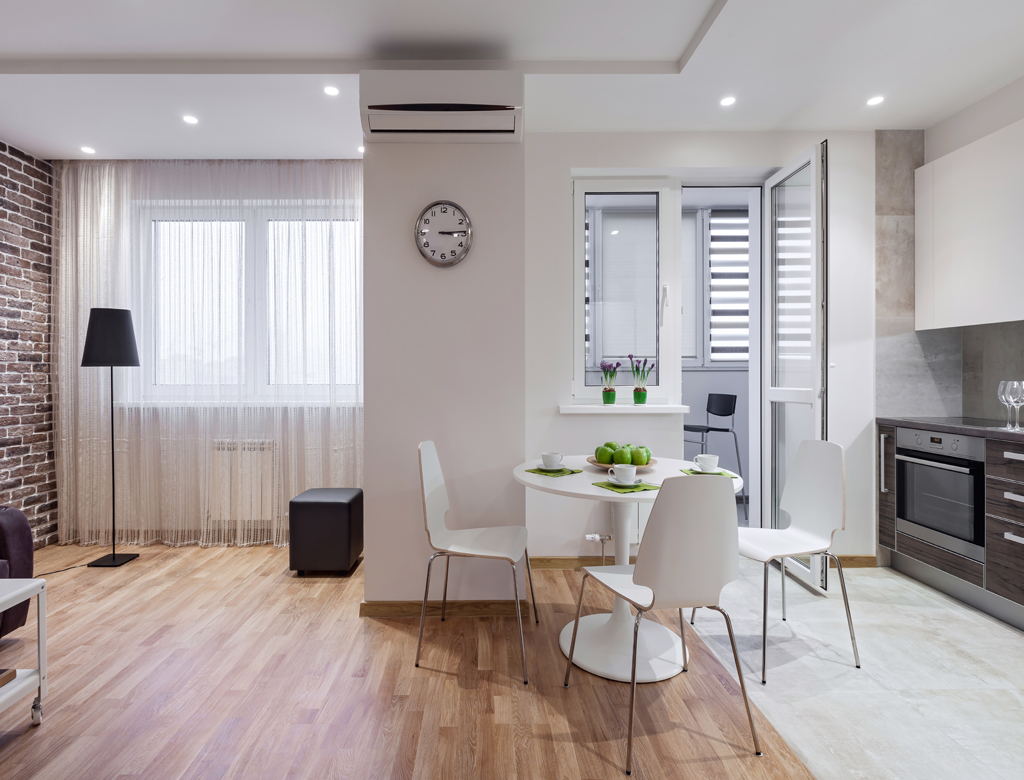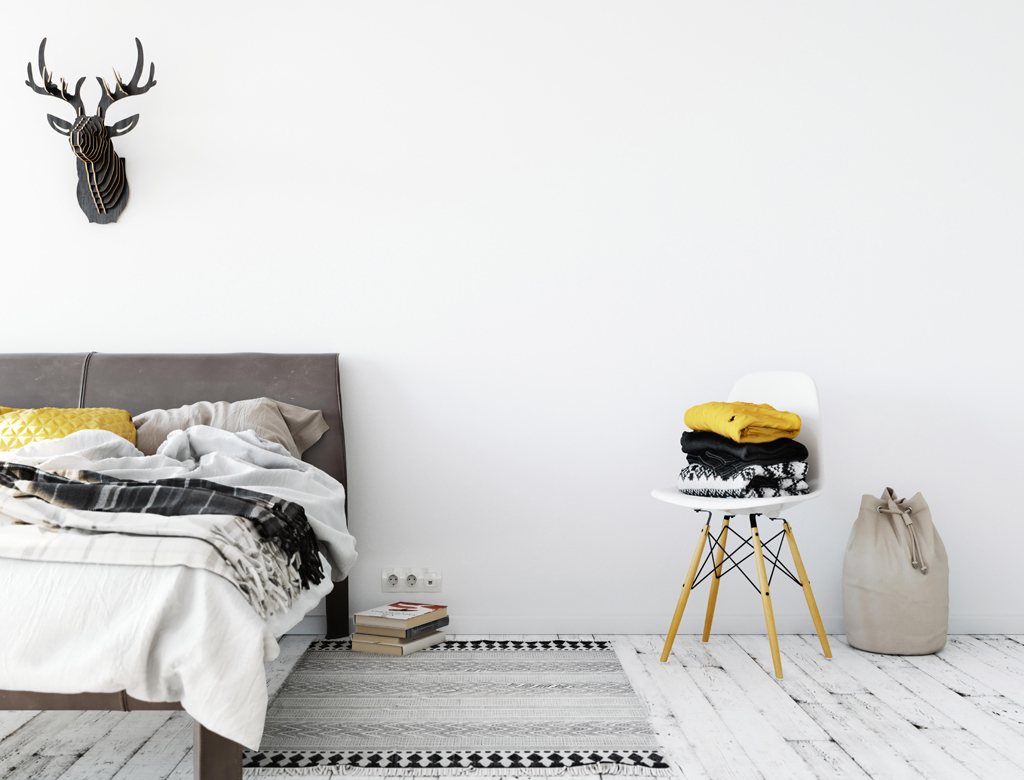Scandinavian style gallery
Textiles in warm tones
The Scandinavian countries are associated with cold climate, snow and low temperatures. Therefore, warm clothes are common in Scandinavian interior design: they can be quilts and carpets made of wool, sheep’s leather or moheru. Filling the interior with warm fabrics is a great way to make the Scandinavian lounge cozy and warm, especially in winter times.
Simple decorations
The Scandinavian interior design is all about simplicity. So when you’re finishing them, always choose simple, decorative design. For example, a table in the living room with elegant ceramic vases. Think of decorating the bench seat with add-ons and pillows in simple geometric designs. Timber gadgets (toys, pictures, blocks and other bibeets) will be a very good idea as well.
Connect wood with metal
The Scandinavian design uses wooden elements not only on the floor, but also in furniture and fittings. That means, such interior is usually equipped with wooden closets, tables and chairs. However, recent trends combine the use of wooden elements and metallic finishes. For example, copper wall lights and brass vibras are installed in a wooden ceiling to add the entire space.
Plants and fresh flowers
The severity of the Scandinavian weather conditions is not helping the vegetations growth. Perhaps this is the reason why Scandinavian interiors are full of plants to compensate the ungrateful nature. Scandinavian homes are often decorated with vases with cut flowers and potted plants, likely quite large. However, make sure to locate them properly.
Neutral colours
When decorating Scandinavian interiors, you must remember that there is a special palette, so-called neutral colours associated with Scandinavian style. They are shades of gray, white, brown and black. This is worth remembering If we want to create a pure and calming effect of Scandinavian design, those colours are quite nice value for money. Some designers also suggest to add more intense colours, such as fuchsia and sea green, but in a typical Scandinavian interior, walls are often white to highlight everything inside.
Keep it organized
One of the most important features of Scandinavian interior design is the order of space. This is due to Scandinavian minimalism. Therefore, unnecessary clutter should be avoided, and every space in your appartment or house must be wisely think over. Scandinavians are pretty raw in style and form, so it comes with its own challenges within interior design. Their main motto is “less means more”, because it is important to have an empty, uncluttered space where you can rest better.
Bright floors
This is an important part of Scandinavian interior. It will certainly not match the wall-to-wall lining. The floor is usually made of light, hard and natural wood, keeping its light colour or is painted white. The most commonly used colours are delicious molti oak, milkshake grande and almont grande oak. A bright, laminated floor is a great idea for Scandinavian finishing. This makes the place look bright and spacious, creating a cozy and friendly atmosphere.
Proper lighting
The number of sunny days and daylights at all are quite limited in Scandinavia. Therefore, the use of artificial lighting becomes particularly important in Scandinavian conditions. The lighting is even considered a source of life, and the Scandinavian design should have different forms of lighting to create a warm and cozy atmosphere. We recommend the use of modern industrial-style lighting such as wall lights and hanging lamps.
DETAILS
The Scandinavian style represents a design philosophy that is functional, simple and with easy lines. In accordance with design principles, you must be in constant harmony with your environment, and things should last and not be exchanged. To fill the art of good living, the design philosophy promotes a simple home environment which improves uncomplicated way of living.
The minimalist style of Scandinavian design appeared in the 1930s, covering primarily three Scandinavian countries (Denmark, Norway and Sweden) and two Nordic neighbours (Finland and Iceland). The term “Scandinavian design” has its roots from a design show with the same name that took place in … United States and Canada 1954-1957, promoting a simplified lifestyle and presenting various works of Scandinavian designers. The minimalist philosophy has focused on pure lines and simple designs inspired by nature and climate to create a Scandinavian design. The style praised beautiful designs and high-quality sustainable products that were affordable and accessible to people from all environments. The Scandinavian design exhibitions in the 1950s played an important role in the impact of these design principles in Europe and North America.
The core of Scandinavian interior design is to improve everyday life. To achieve this, designers focused on furniture, lighting, textiles, accessories and objects of everyday use such as dishes, cutlery, utensils and bedding. In Scandinavian interiors there is always a strong link between design and nature. This is often seen in sharp contrast between abstract and natural shapes, as well as hard and soft surfaces and materials. Most home interiors use natural materials such as stone, wood, leather and hemp.
Floors
Scandinavia is rich of wood, that perfectly meets the strict thermal criteria in this cold region. Wooden floors are the most important in Scandinavian interiors, and floor-covering has never become popular. If carpets are used, they are usually limited to small ones. The interiors usually have wooden floors in bright wood tones in all rooms, except bathrooms where there are tiles with a heated floor system.
Colours
Typical Scandinavian interiors include white walls and cool blue and gray textiles. Sometimes you can find warmer tones on clothes and carpets in form of yellow and orange patches. However, it is important to note that the dominant Scandinavian colours are shades of gray, white, brown and black, as they best reflect the region’s climate.
Fireplaces
The Scandinavian winters are raw, so most of the houses are installed with large fireplaces that provide enough heat. Designs of fireplace are usually simple, but often decorated with beautiful tiles or bricks with black metal accents.
Accessories
Scandinavian style means minimalism, which in natural way, will always promote the design philosophy of “less means more”. Accessories are usually ignored or reduced to the absolute minimum to give a chance to create as little clutter as possible to avoid your distraction.
Internal space
Wooden material is often used on walls, ceilings and furniture. Warm tak and oak wood tones are preferred. When used with pine, it is often covered with a special oil that reduces yellow wood shades to light gray.
Friendly for enviroment
Scandinavia is known for its friendly attitude to the nature and ecology policy. Forests, rivers, lakes are crystal clear and waste segregation has existed there for many years. There’s no difference with interiors. Scandinavian design principles promote green houses with organic, durable building materials for floors, walls, siddings and roofs. Such materials are very often co-financed by the goverment.


